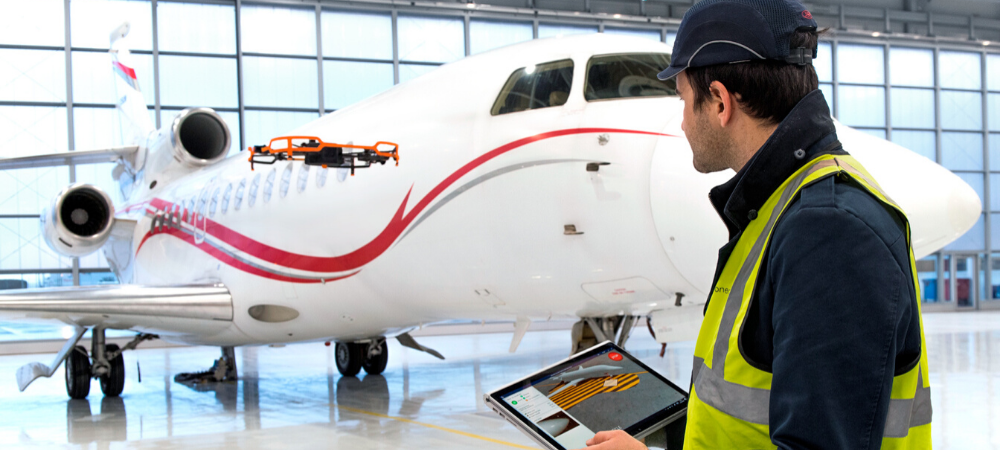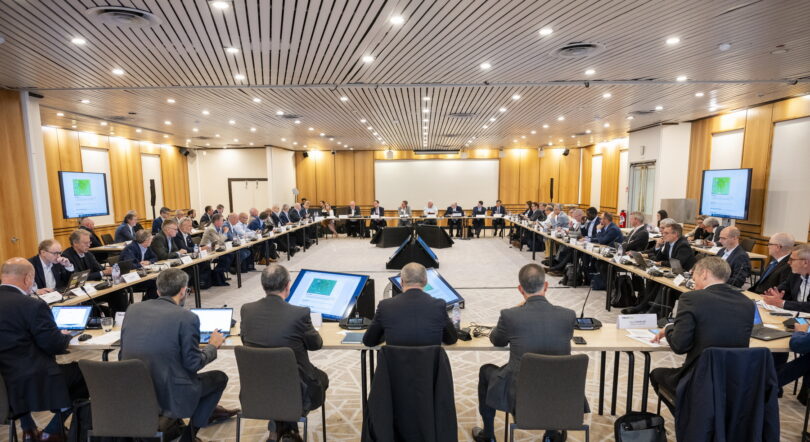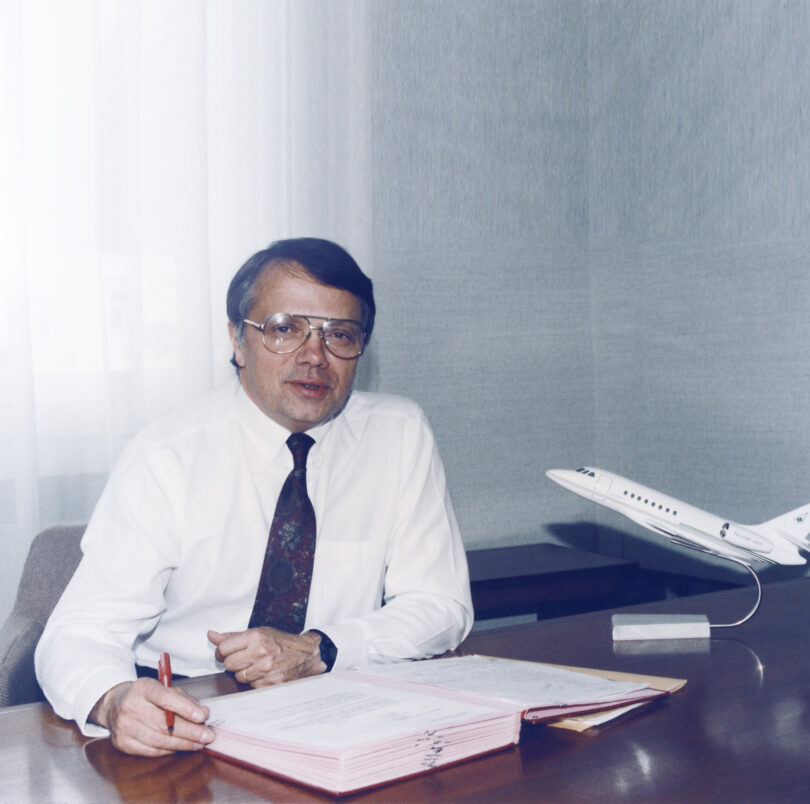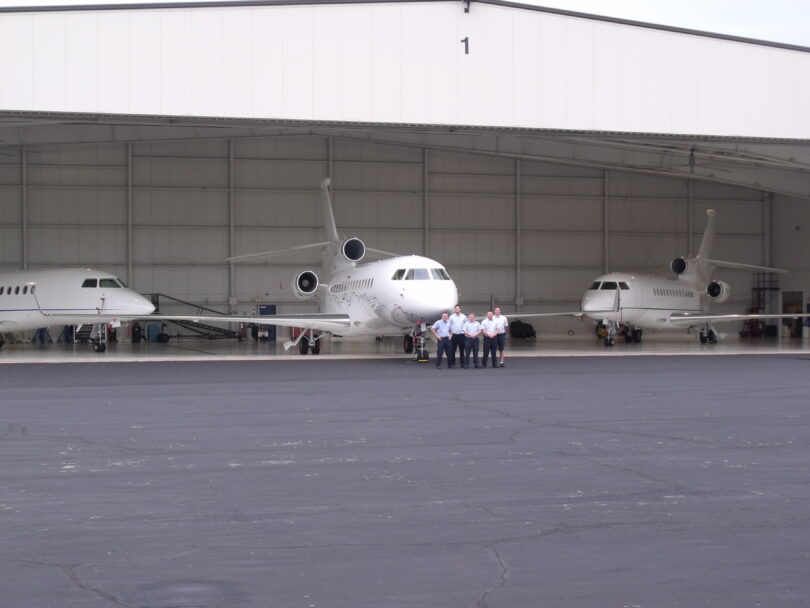Drones are taking on more and more tasks in the commercial realm—photographing real estate, inspecting crops and cell phone towers, and filming sports, for example. Increasingly, they are able to operate with minimal input from humans. Now Dassault is evaluating the potential of semi-autonomous drones to inspect aircraft for all kinds of minute damage and wear.
Last year, we conducted trial drone inspections of Rafale fighters. As you can imagine, these tough aircraft endure hard use, including a lot of external stores loading and unloading, and low-level flying where there is an increased chance of bird strikes, among other hazards.
This year, as part of our ongoing evaluation, we conducted a full external inspection of a Falcon 7X at our Dassault Falcon Service center at Paris-Le Bourget. As we gain experience with this new technology, we envision rolling it out more widely. Drones hold the potential to improve the quality and speed of visual inspections, reducing service downtime.
We’ve been evaluating an amazing drone system from Donecle, a Toulouse-based company founded in 2015. Donecle has been integrating drone technology, machine learning, image analysis algorithms and maintenance inspection best practices.
Donecle’s drones automatically orient themselves with laser positioning and photograph the entire airframe so that imperfections as small as one square millimeter can be visually confirmed by technicians.
The drone can identify small structural damage that might be missed by eye, including from lightning strikes, small bird strikes or improper ground handling. It can detect wear and tear such as worn rivets, small skin cracks, skin deformations, the beginning of delaminations, tiny patches of corrosion, missing or damaged placards, even paint chipping or just paint wear.
The system generates a PDF report for techs and flight departments and stores the information in the cloud, providing “traceability.”
Traceability means that you can monitor trends in your airframe structures just as you monitor engine trends. A record of airframe integrity may also come in handy at resale time. Drone data can be aggregated for fleet trend monitoring, unlocking the potential for predictive maintenance.
The drone system provides a useful safety check on the airplane, but also a safety enhancement for the maintenance team, because it eliminates the need to climb on top of airframe structures, with attendant fall risks, not to mention the potential to do inadvertent damage to the airframe. It also reduces the need to move inspection structures around the aircraft, which also presents some damage risk.
Alas, there is still one thing a drone can’t do which is give the customer a warm greeting and advise on a maintenance plan of action.
We’ll be around for that for a long, long time.
Jean Kayanakis,
Senior Vice President, Worldwide Falcon Customer Service & Service Center Network.
Dassault Aviation



